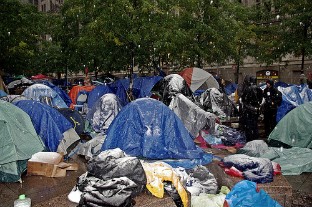The case against Wall Street: Why the protesters are angry

Read interviews with Gary Dorrien and Shane Claiborne on Occupy Wall Street.
The Occupy Wall Street movement has spread from Lower Manhattan to more than 900 cities and four continents, with major protests occurring in Washington, D.C., Boston, San Francisco, Dallas, Seattle and Phoenix. In some ways it is not the movement that many of us have wanted to see emerge over the past three years—or 30 years. Its organizers are rooted in anarchist theory and strategy; it has no analyses of corporate capitalism or theory of constructive alternatives to it; and thus far it has no demands.
But the conventional activist groups that have demands and agendas have sparked nothing like a movement. Three years—make that 30 years—of stagnant wages and accelerating inequality offered an opening for a populist movement demanding a full-employment economy and a curtailment of Wall Street's speculation and gouging. Now a smattering of mostly youthful protesters has set one off. They would not have succeeded had they operated like conventional trade unions and social justice groups. They are building a social movement that prizes radical democracy, radical hospitality, and a distinct blend of nonviolence and outrage. And the long-term success of Occupy Wall Street depends on its ability to build constructive coalitions with the very groups that initially spurned it.





